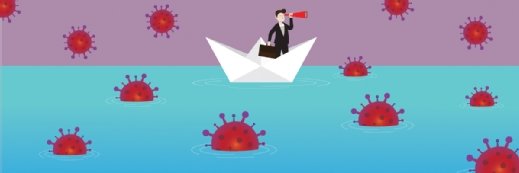
Getty Images/iStockphoto
Researchers Link HSV-1 to Alzheimer’s, Creating Hope for a Cure
Researchers at Tufts University are saying an FDA-approved anti-viral medication may help Alzheimer’s after linking the herpes virus to the debilitating disease.
An FDA-approved antiviral drug used to treat herpes simplex virus I infection (HSV-1) may be effective for treating plaque formation and other markers of Alzheimer’s disease, according to a new study from Tufts University.
Reported in Science Advances last week, engineers and scientists at Tufts University reported a link between HSV-1 and Alzheimer’s disease after they created a 3D human tissue culture model, which mimics the components in the brain.
Specifically, researchers uncovered 40 Alzheimer’s-associated genes that were overexpressed in the HSV-1 infected brain tissue constructs compared to the non-infected tissue.
These findings may accelerate treatment of Alzheimer’s disease.
“Our brain tissue model allowed us to take a closer look at the potential causal relationship between herpes and Alzheimer’s disease, and the results were intriguing, “said David Kaplan, stern family professor of engineering and chair of the department of biomedical engineering at Tufts’ School of Engineering.
“After just 3 days of herpes infection, we saw large and dense plaque formations of beta amyloid protein, as well as increased expression of some of the enzymes responsible for generating the plaques. We observed neuron loss, neuroinflammation and depressed signaling between neurons – everything we observe in patients. Never before have so many facets of the disease been replicated in vitro.”
With this finding, providers may be able to use valacyclovir to treat some of the markers of Alzheimer’s disease, researchers indicated.
Valacyclovir is an FDA approved anti-viral medication used to treat herpes infection and reduce expression back to pre-infection levels of several molecules and enzymes associated with Alzheimer’s disease, such as presenilin-1, researchers stated.
To look at the relationship, researchers first infected neurons I the bioengineered brain model with HSV-1 and observed formation of amyloid plaques, neuronal loss, neuroinflammation, and diminished neural network functionality, which are all usual features of Alzheimer’s disease.
The gene coding for the enzymes cathepsin G and BACE2 were the most prominent and are both associated with Alzheimer’s disease and involved in the production of beta amyloid peptides found in plaques. Some of the overexpressed genes may be potential future drug candidates.
Other studies have implicated pathogens as environmental agents, which may cause the development of Alzheimer’s disease, but Tufts model is vastly different from other existing models that only account for one to six percent of patients, cells derived from tumors, or induced to overexpress factors that push them into a disease state.
Researchers noted that they can not only observe physical and biological changes in the neurons in real time using imaging methods, but also can monitor electrical activity and integrity of the communication networks between the cells.
“Most other studies relied on using genetic mutations in the neurons to induce Alzheimer’s disease-like phenotypes and ours does not, which is what really sets it apart. Our model using normal neurons allows us to show that herpes virus alone is sufficient to induce Alzheimer’s disease phenotypes,” Dana Cairns, postdoctoral research associate in David Kaplan’s lab and first author of the study.
Tufts stated that its model consists of silk protein and collagen, populated with normal neural stem cells that are then guided to differentiate into neurons. It promotes growth of neurons with the cell bodies and extends axons, which makes neural connections and mimics both the grey matter and white matter of the brain, respectively.
“The genetic anomalies of these cells do not necessarily represent what happens in sporadic disease, which occurs without genetic inheritance and from as yet unknown causes in 95 percent of cases,” researchers said.
“These patients start with presumably normal brain tissue, with some likely age-related risk factors. Environmental conditions are suspected of playing a more significant role in triggering the cascade of molecular reactions leading to the onset of disease. The model used in this study starts with genetically normal cells, allowing for a clearer examination of environmental factors potentially leading to disease.”





